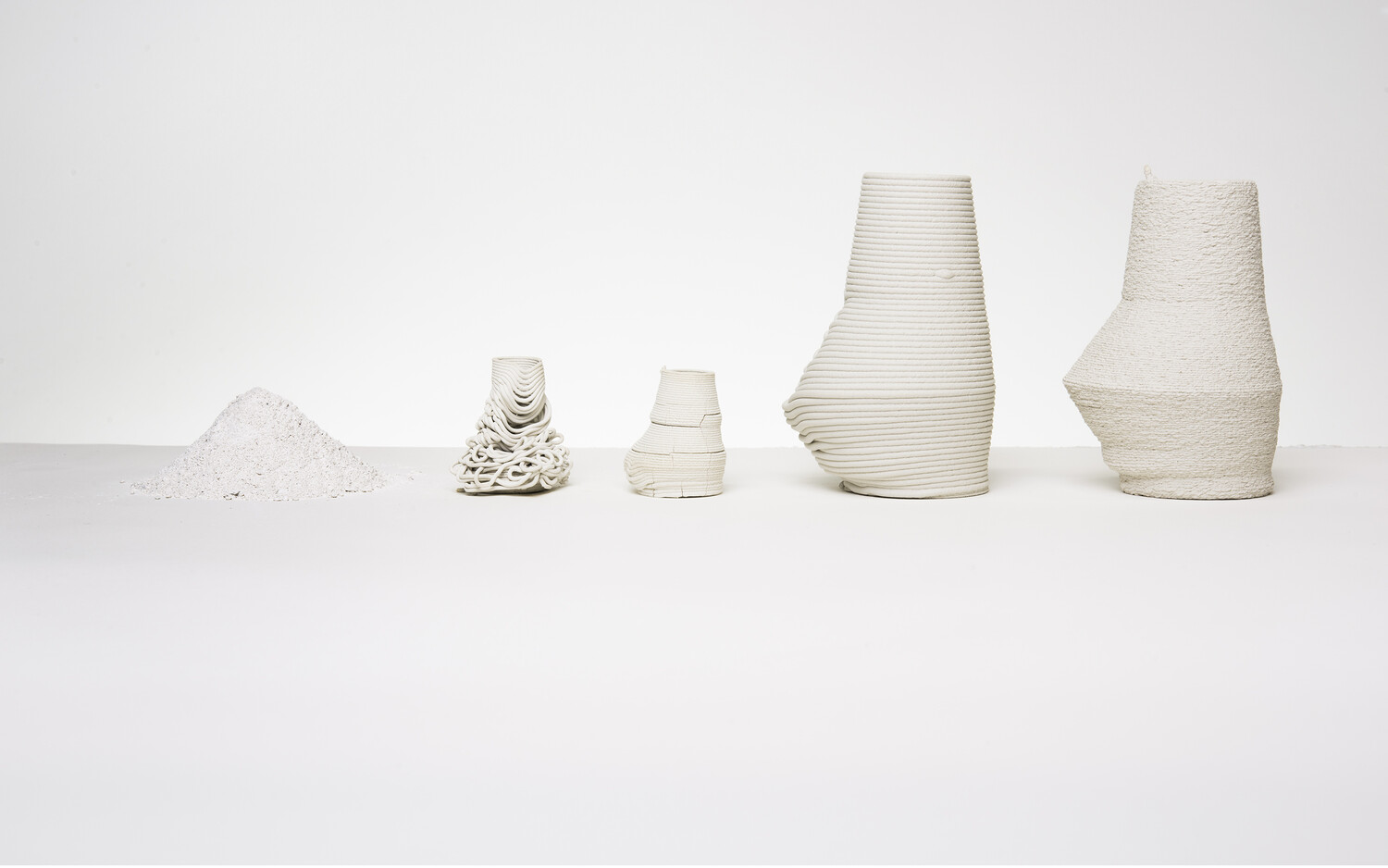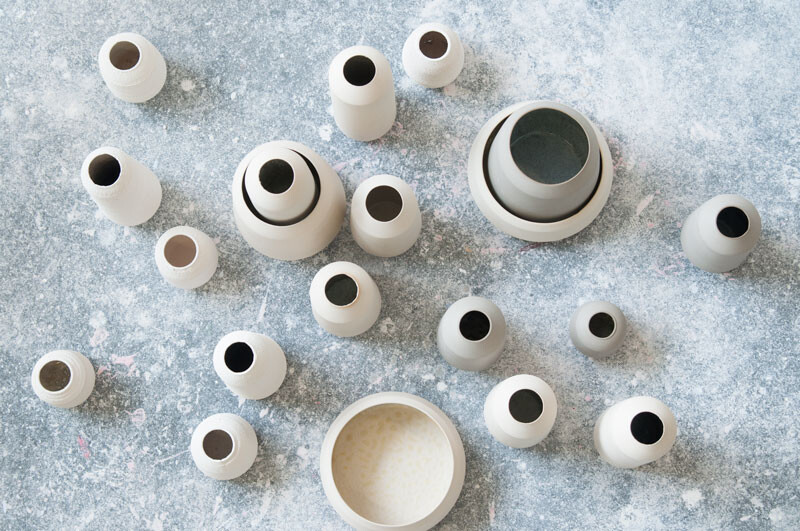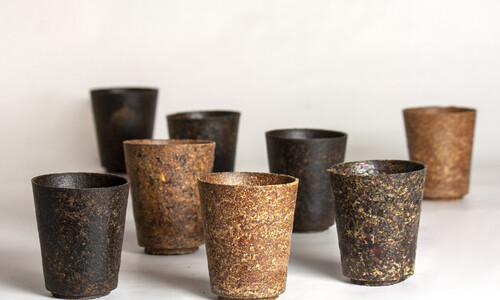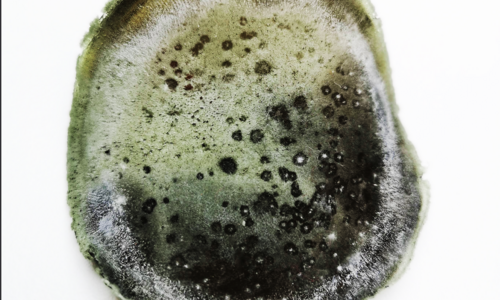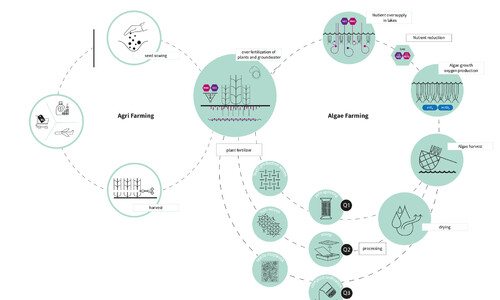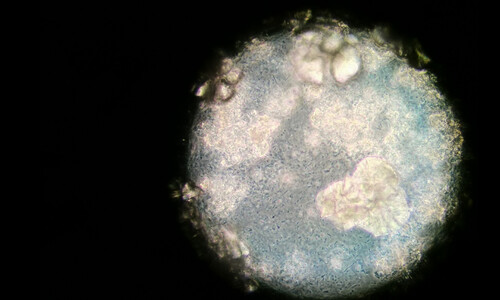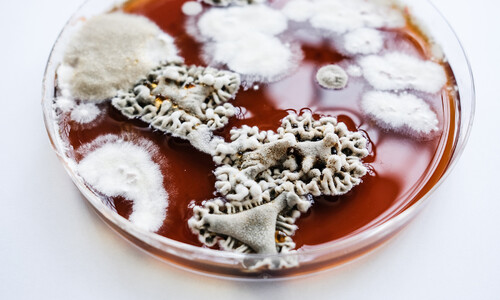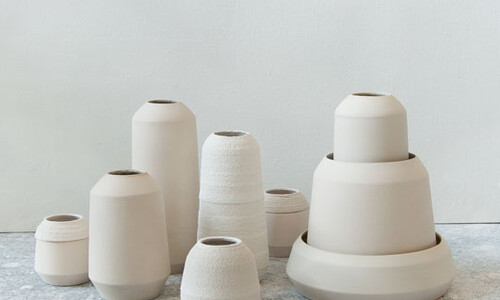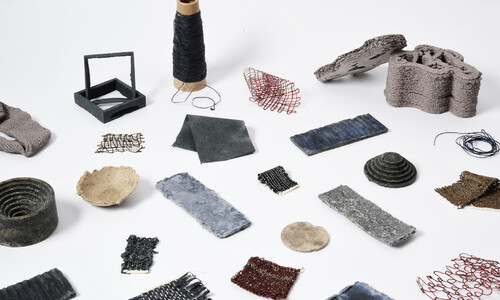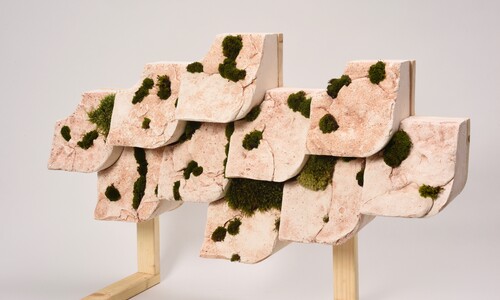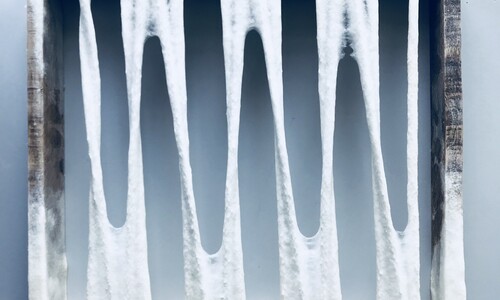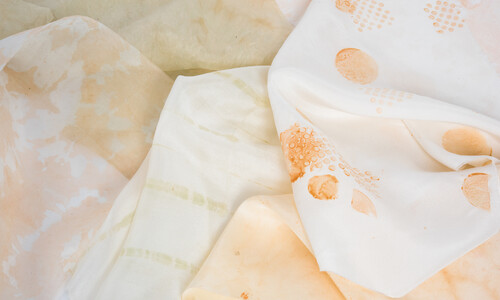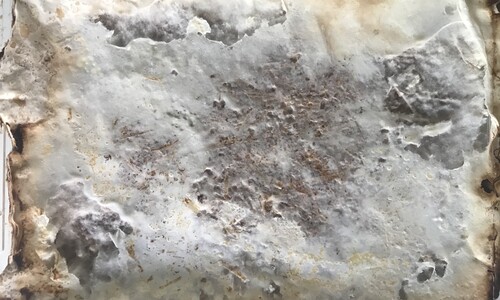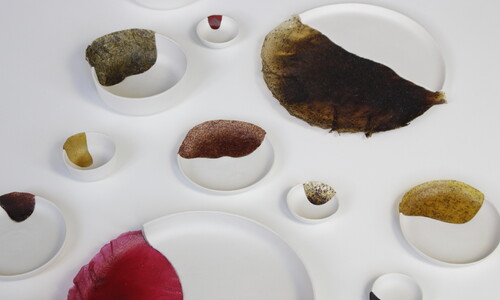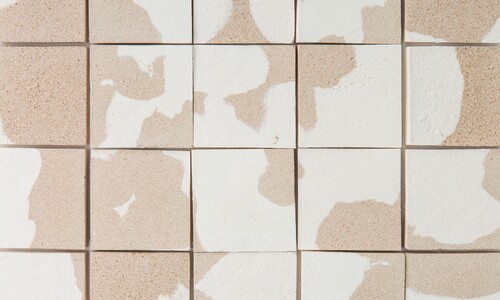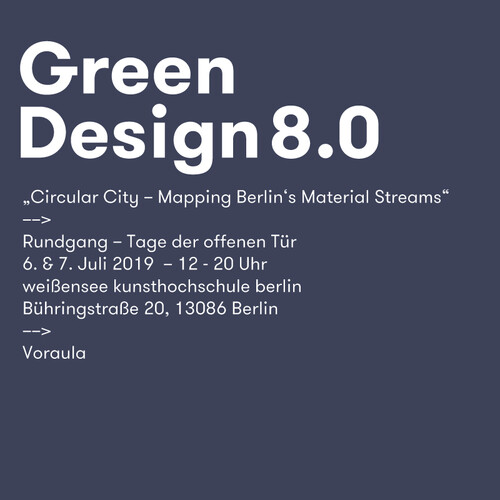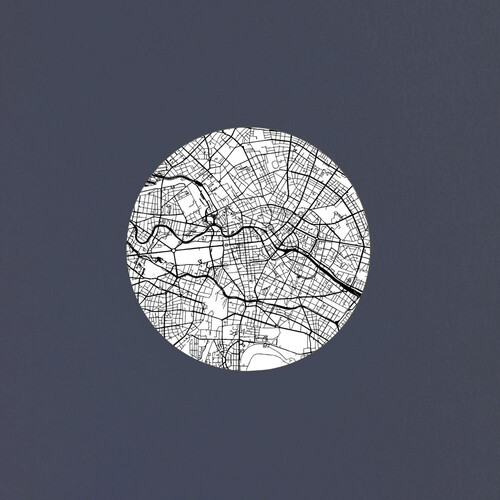The fascinating shell matrix of the oyster grows from its so-called epithelial cells. These excrete calcium, carbonate, and conchiolin in various formulations: Two materials which by synthesis form the resistant shell.Analogous to this phenomenon, traditional ceramic processes and the new, generative technology of 3D- printing give two waste materials a meaningful route of recycling: the lime from oyster shells and ceramic fractures, which in combination result in unexpected, formal-aesthetic as well as haptic qualities. The chalk of the shells, fired to produce calcium oxide, forms the main component of the developed glazes, which result in a wide spectrum of shades due to the different compositions of the raw material. The oyster-shell-based glazes create an visual and tactile contrast to the built up surface structures of the printed material synthesis.Through the objects on display, the project Epithel emphasizes the beauty of the two waste materials on an aesthetic level and gives them a second and sustainable chance at life.

